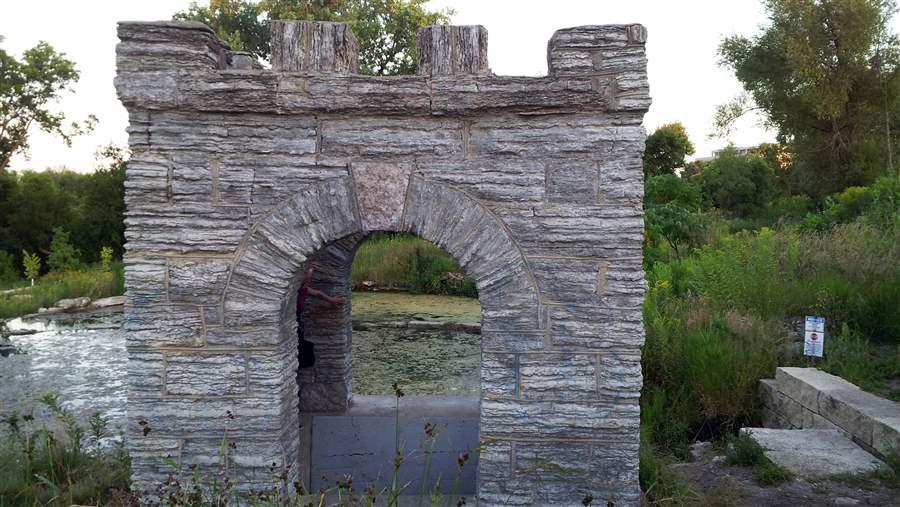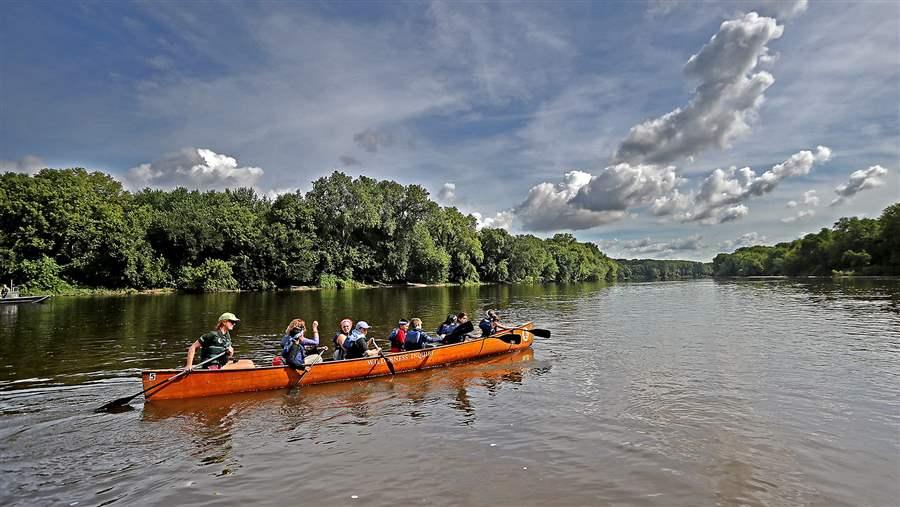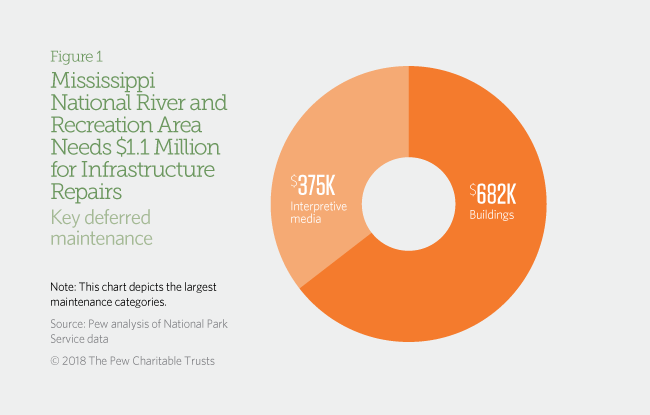Mississippi National River and Recreation Area
Minnesota
Pew created this case study using National Park Service deferred maintenance data issued in fiscal year 2015. The information listed here may no longer reflect the NPS site’s current condition or maintenance requirements. To find the most up-to-date information, please use the National Park Repair Needs tool.
Overview
The Mississippi National River and Recreation Area spans 72 miles of the iconic river where it separates St. Paul and Minneapolis. It protects land along both sides of the river, which flows across prairie before plunging over St. Anthony Falls, its only waterfall, and through its narrowest gorge just north of the Twin Cities. Among the many historical sites along its banks is Fort Snelling, where the military worked to break Japanese codes during World War II.
The national park, established by Congress in 1988, is managed by the National Park Service (NPS) in partnership with local communities, parks, and other organizations tied to the Mississippi River. Despite its urban setting, this section of the river and the 54,000 acres of protected land along it offer fishing, boating, and canoeing in the summer, and ice fishing and cross-country skiing in the winter. But more needs to be done to restore the park, which has $1.1 million in deferred maintenance.

A majority of the recreation area’s $1.1 million in deferred maintenance is to repair the Coldwater Spring house and reservoir.
Gabrielle Vanslette
Maintenance challenges
Because this is a partnership park, it operates and maintains only one property: Coldwater Spring, a tract of prairie and wetlands that offers hiking, biking, and bird-watching. Originally used by American Indians as a gathering spot, the spring became a drinking water source for soldiers stationed at Fort Snelling in the 1880s. The Army built water works to protect the spring, including a spring house that kept debris from muddying the entrance. The War Department decommissioned the fort in 1946 and the site is now managed by the Minnesota Historical Society in partnership with the NPS. In 2010, the park began restoring the area, including repairing the spring house, removing some buildings constructed during the 1950s and ’60s as part of a research center, and reseeding 12 acres of prairie and an acre of wetlands abutting a reservoir. The NPS needs $682,000 to complete the restoration work.
The park also needs $375,000 to upgrade nine interpretive media collections at the visitor center.
Locals and visitors alike spend more than $5 million in communities along the Mississippi National River and Recreation Area. That’s why it’s important to ensure collaboration and support from Congress, state agencies, and local businesses when funding is needed for infrastructure maintenance.Terry Mattson, president and CEO, Visit Saint Paul and the RiverCentre Authority
Recommendations
To address the infrastructure needs at Mississippi National River and Recreation Area and other NPS sites in Minnesota and across the country, Congress should:
- Ensure that infrastructure initiatives include provisions to address park maintenance.
- Provide dedicated annual federal funding for national park repairs.
- Enact innovative policy reforms to ensure that deferred maintenance does not escalate.
- Provide more highway funding for NPS maintenance needs.
- Create more opportunities for public-private collaboration and donations to help restore park infrastructure.
Mississippi National River and Recreation Area Facts
2016
| Visitor spending | $11.2 million |
| Jobs created by visitor spending | 175 |
| Economic output | $15.6 million |
| Labor income | $5.5 million |
| Visits | 256,944 |
| Deferred maintenance (fiscal year 2015) | $1.1 million |
Sources: National Park Service, “National Park Service Visitor Use Statistics,” accessed June 14, 2017, https://irma.nps.gov/Stats/SSRSReports/National%20Reports/Annual%20Visitation%20By%20Park%20(1979%20-%20Last%20Calendar%20Year); National Park Service, “Visitor Spending Effects,” accessed June 14, 2017, https://www.nps.gov/subjects/socialscience/vse.htm; National Park Service, “NPS Deferred Maintenance Reports,” accessed June 23, 2017, https://www.nps.gov/subjects/plandesignconstruct/defermain.htm
© 2018 The Pew Charitable Trusts
The Pew Charitable Trusts works alongside the National Parks Conservation Association, the National Trust for Historic Preservation, and other national and local groups to ensure that our national park resources are maintained and protected for future generations to enjoy.















